Peaks over balconies: design features and installation methods

If the glazing of the balcony is impossible for some reason, then the balcony visor will perfectly cope with the protection functions of this non-residential space. Different materials are used in such designs. It is worth dwelling in detail on the pros and cons, as well as consider the nuances of decorating a balcony with a visor.
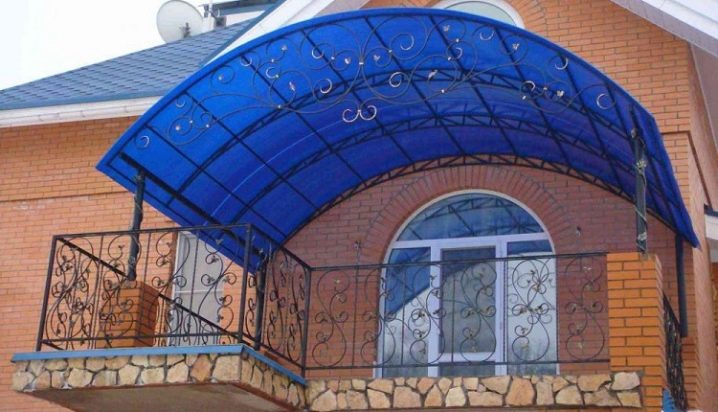
Advantages and disadvantages
An open balcony will be more convenient with protection from rain and sun in the form of a canopy. Even glazing does not always cope with this function. For example, a visor will definitely come in handy for a balcony on the last floor. It will also be a good addition for balconies on other floors. This design, for example, will protect from the negative impact of neighbors.
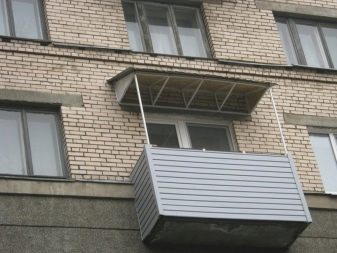
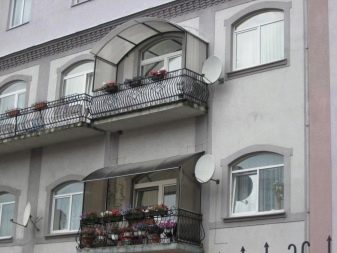
The advantages of the visor are as follows:
- protection of people resting on the balcony from direct ultraviolet rays;
- protection from snow accumulation inside the balcony in winter;
- wind protection;
- protection from debris, dirt, dust and cigarette butts;
- some protection from thieves, as it will be more difficult to get to the balcony from the upper floor through the visor.
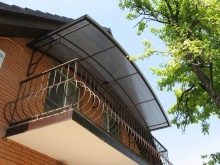
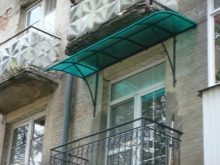
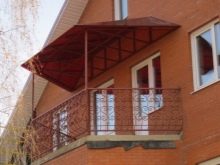
The classic design of the visor is the frame and cover material. You should also distinguish the visor from the balcony roofs. The latter cover the entire area of the balcony space. Balcony roofs are usually fixed to a load-bearing wall or mounted on supports. The visor is attached to the outside of the balcony and looks like an extension of the entire structure.
Sometimes the visor is mounted to the floor slab on the floor above. It is usually smaller than the size of the balcony roof, so its installation will not affect the quality of the supporting structure. The smaller size of the visor can be attributed to a negative factor, but less materials for manufacturing will be required, and this is a significant cost saving. Designs are very diverse in appearance, as well as in the types of materials used.
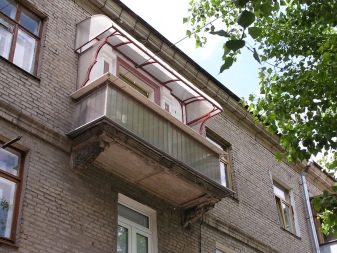
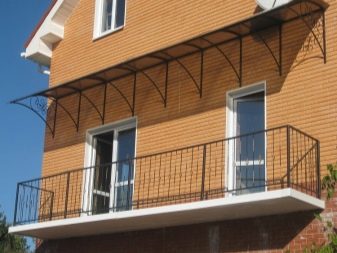
Manufacturing materials
Each of the materials for covering the balcony visor also has positive and negative sides. A popular option chosen for covering visors is corrugated board. It is lightweight, temperature resistant and durable. Modern sheets are characterized by a variety of color options, so there are usually no difficulties in choosing the best combinations.
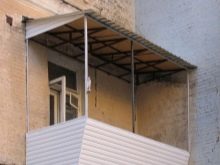
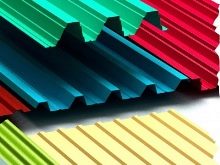
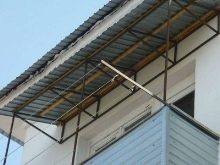
The traditional material for covering the visors is slate. Modern options are distinguished by good design qualities, technical characteristics. Of the negative qualities of slate, it is worth noting the need for its mandatory waterproofing and fragility. In addition, for visors, slate will be a heavy coating. Ondulin can be considered as an alternative to slate. The appearance of this material is similar, but it is lighter and more flexible. The invulnerability of ondulin to precipitation is quite high.
Polycarbonate balcony canopy is a common option. Moreover, this material is in demand both in private construction and on an industrial scale. Basically, carbonate is a plastic that can be transparent or colored. However, this plastic is highly durable. The flexibility and pliability of the material is appreciated by specialists who have learned how to create visors of various shapes.
Polycarbonate has good sonic qualities, but if it is transparent it will be poor sun protection.
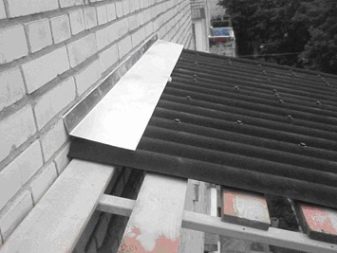
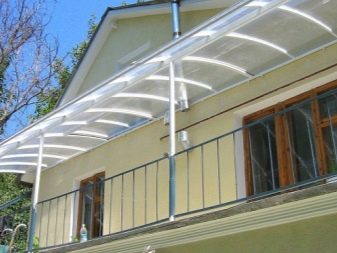
The metal frames of the canopies are covered with special awning materials.The advantages of the awning system are the ability to unfold and fold the structure. Mechanisms can be electrical or mechanical. Modern awning fabrics are durable, non-fading in the sun, with water-repellent coatings. The texture of the awning can be smooth or perforated.
Another rare variant of the visor coating material is glass. This material has more disadvantages than advantages. It is fragile, which creates a danger, since fragments can injure. The material is transparent, which means that it will not protect well from the sun. The weight of the glass is comparable to that of slate, it is heavy, and its installation requires great care. Glass canopies are beautiful, hardly noticeable from the street.
They are used when it is necessary to protect the space of the balcony, but at the same time it is impossible to change the general style of the building.

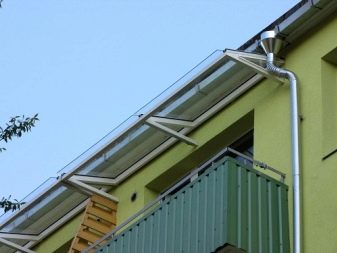
Views
Balcony canopies are simple designs, but they are very diverse. For example, the most common and inexpensive option is a shed visor. The main characteristic of the view is its pronounced slope, therefore, they are characterized by ease of use for different balconies. If the size of such a visor is selected properly, then the precipitation will not linger, but will be removed immediately to the street. Installation of the structure is simple, available for any master who knows how to use tools on his own.
The following materials are suitable for creating a shed visor:
- slate;
- corrugated board;
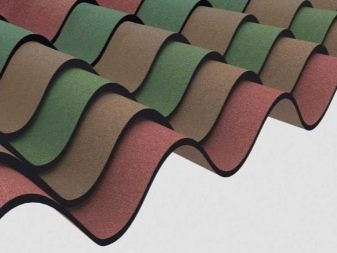
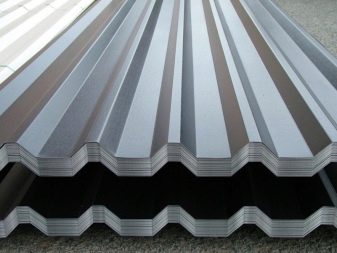
- carbonate sheets;
- glass.
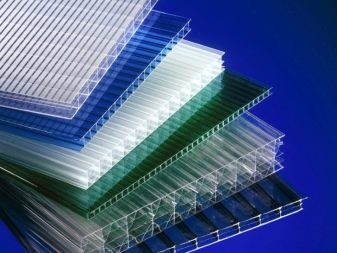

The classic gable-type visor resembles an ordinary roof in appearance. The visor will look good if its dimensions are small. Such a visor looks very attractive if it is decorated with decorative, for example, forged elements. Ondulin, profiled sheets and metal tiles are good as a coating for a gable canopy. The arched visor option is suitable for both large and small balconies. The arched shape ensures effective removal of dirt and sediment from the coating.
The arched visor looks very nice, especially if the retaining element of the structure is forged.
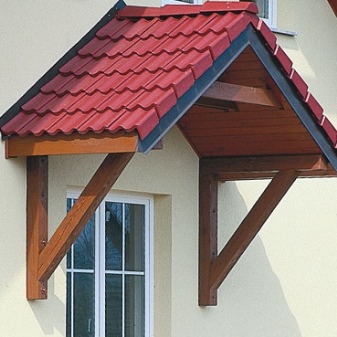
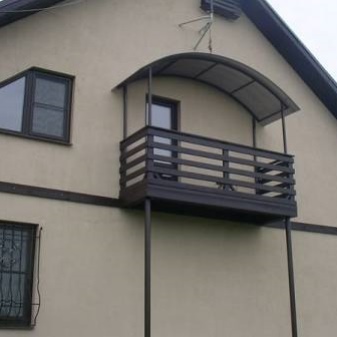
Visors a la marquis have been known for a long time, but they are usually installed above the entrance to the premises. Fashionable awnings look good both as balcony canopies and for a loggia. They protect the area from precipitation. The awning for the loggia, mounted a few centimeters less than the main area, will protect from the bright sun. Heating and insulation of the loggia will be solved by other systems. Awning awning fabrics can be plain, patterned, striped.
The option is convenient when you cannot choose curtains, for example, for frameless glazing.
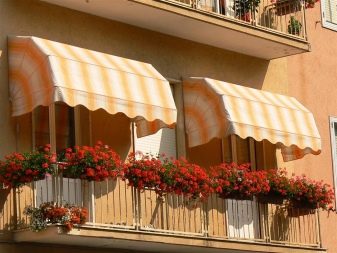
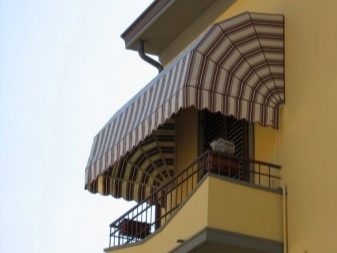
Another beautiful and voluminous type of visor is a domed one. It is often used on the last floors of houses, and is made of polycarbonate. The design is complex to manufacture, therefore it requires referral to special assembly teams. According to the norm, visors of any kind can be installed only with the permission of the managing organization. The legality of the erection of the structure must be confirmed by the relevant provisions. In addition, in this position, the content of the visor in the proper form is regulated by the owner of the room. If the permission of the management company is received, then the following tips for installing the structure will come in handy.
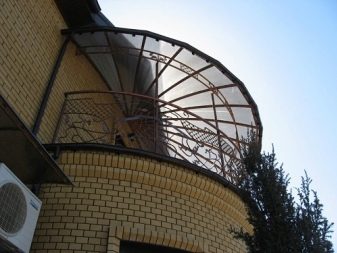
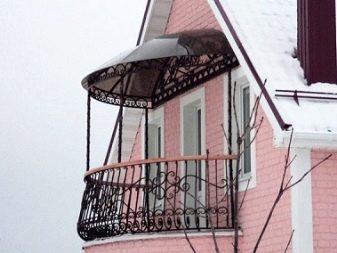
Installation tips
Balcony visor can be installed by hand. Before starting work, you will need to complete the project. This will help to determine in advance the material of the cover of the visor, as well as the material of the frame. The technology of the installation work will be associated with this stage. The easiest way is to work with polycarbonate, which is also affordable. The material has a good appearance and does not spoil the exterior of the facade. Polycarbonate sheets come in a wide variety of colors. The material bends well, which is why it takes completely different forms.
The most widespread are such forms as:
- arched;
- semicircular.

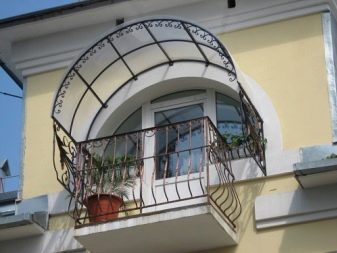
A metal frame is required to install polycarbonate. It is secured with special washers. It is also worth distinguishing between polycarbonate, which can be monolithic or cellular. The first option is more transparent. The second option is characterized by greater plasticity, it is easy to process. If the choice of material is a resolved issue, then you can proceed to creating a drawing. For him, you will need to take measurements that will be useful for calculating the amount of materials.
Experts advise that the angle of inclination of the visor is 20 degrees or more. With such an inclination, a minimum of debris and snow will accumulate on the surface of the visor. It is better to start work related to the arrangement of the visor with welding a metal frame. Pipes or channels can be used for it. Installation of the structure can be carried out directly to the wall. Sealant or silicone glue can be used to close gaps in the joint.
Fastening to the wall is permissible with ordinary self-tapping screws.
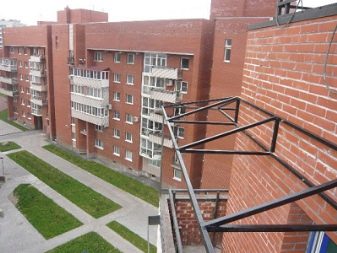

To begin with, the profile pipes are marked and cut into pieces according to the dimensions marked in the drawing. Slices should be cleaned using sandpaper or a special file. The simplest wireframe is a rectangle whose two sides must be equal. The progress of work on the level should be monitored. The finished frame should be cleaned, primed and painted. This will improve the appearance of the structure. If parts of the metal structure are unpainted, then they must be treated with a protective compound. It is worth choosing those that prevent corrosion. This is especially important if the sides of the visor are completely metal.
Untreated metal will lose its qualities over time, the appearance of the structure will deteriorate.
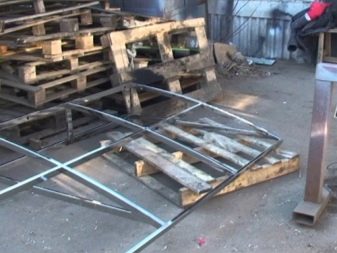
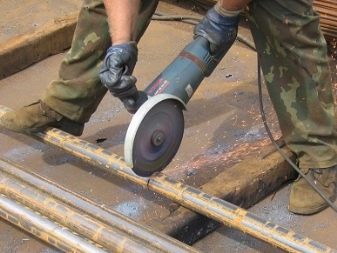
The canopy frame attachments can be installed to the floor slab of the balcony above. Installation involves drilling holes into which the anchor bolts will be inserted. The holes need to be placed very precisely; a laser or hydro level is useful for measurements. At the end of the work, it is necessary to install polycarbonate, which is placed in the center of the structure. The sheets can be cut if necessary. Polycarbonate canopies do not require waterproofing or soundproofing. Installation is complete. It should be borne in mind that if profiled sheets of metal or tiles are used in the work, it is better to take care of sound insulation and waterproofing. Otherwise, the balcony visor will create noise when raindrops fall on it.
The sound insulation layer must be laid from the inside, under the main surface material.
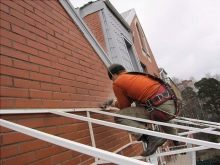
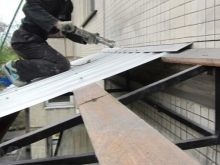

If the visor is made of polycarbonate, then usually a piece of the desired size is simply cut out and laid on top of the frame. Then the polycarbonate must be fixed. Self-tapping screws with sealed gaskets are useful for this. For a self-tapping screw, holes should be made in the coating and frame material. They should get a slightly smaller hole than the self-tapping screw itself. The fasteners need to be wrapped tightly, but do not exert much effort, otherwise the material will crack or bend.
It is worth choosing the material of the cover of the visor in accordance with the financial capabilities and design decision. This point is also influenced by many other specific factors. For example, for a balcony that is only used as a storage room, you can build a canopy covered with steel sheets or bituminous material. They are affordable and easy to install. It should be borne in mind that the installation of sheet materials is carried out with an overlap. If this is done end-to-end, water and debris will enter the gap. The forged frame of the visor with a glass coating will add originality and style.
It is better to call specialists to install it.
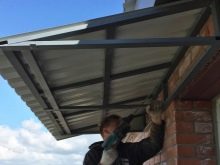

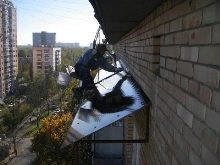
Repair
A canopy for a balcony is an integral part of a cozy and protected atmosphere.So that independent work does not go down the drain, the main thing is to follow the technology exactly. A handmade product will not only protect, but also decorate the facade. However, over time, the balcony canopy itself may need protection. As a rule, violations usually concern the depressurization of the device. A particular danger arises when the waterproofing is broken. Removing the coating is an optional step to deal with the defect.
Modern guided materials such as:
- bikrost;
- univlex;
- isobox.
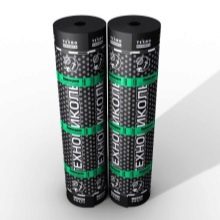

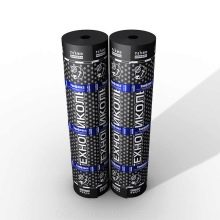
Other methods of roof reinforcement are the use of soft roofing as a backing material and roofing powder as an overhead fixer. The granular powder is fused with a gas or petrol torch. The surface to be treated must be protected from debris and dust. The joints of the patch are additionally coated with bitumen. Making this work is not difficult. You can fix modern materials at any time of the year. For example, to apply a liquid roofing material, you only need a roller or a brush, while the material will play the role of sound insulation, will ensure a tight adhesion of the roofing to the wall.

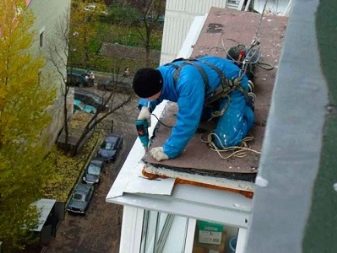
However, the methods of such repair of balcony canopies are not always suitable. Reinforcement of the frame is sometimes required. Existing structures can be wooden or metal. The reinforcement of the frame is usually made of the same material as the frame itself. For example, steel corners or small beams may be needed for work.
Another option for repairing a balcony visor is insulation.
The following materials are suitable as insulation:
- penoplex;
- Styrofoam;
- mineral wool.
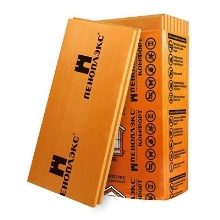

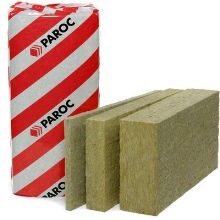
The ideal location for the insulation is between the rafters, providing ventilation. The process of insulating the visor can be skipped if further glazing of the balcony is not provided. The waterproofing material can be repaired on top of the coating material as well as under the coating material. For example, a sealant, polymer materials can be used outside. The coating under the slate or metal profile can be replaced with a modern hermetically sealed insulating material - izol, and Jermalflex is also suitable. These are all major repairs that might come in handy. It is worth considering the operating conditions of the structure and timely check the frame fasteners. This will allow you to eliminate the emerging defects that can be dangerous.
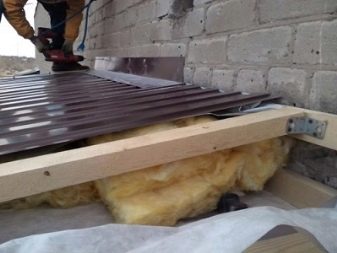
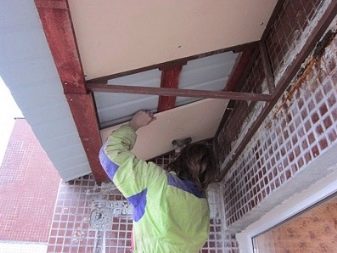
You can learn how to make visors over various objects with your own hands from the video below.













The comment was sent successfully.